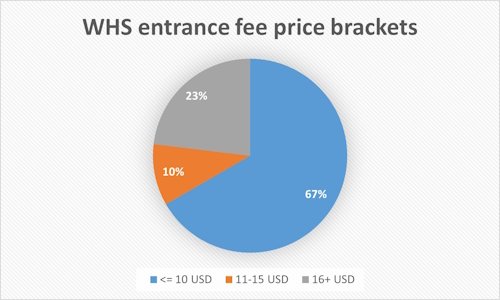First published: Sun 14 Jan 2024.
Els Slots
Foreigner Pricing Analysis
Comments
5 comments
Liam
2 years ago (Jan 14, 2024)
I partially noted this in Greece last year. Entry to government-run sites is free to EU citizens under the age of 25, whereas non-EU citizens over the age of 5 have to pay. It was a bit of a surprise as the last time I'd visited Greece a) I didn't have kids, and b) I was an EU citizen...
Not sure if this happens elsewhere in Europe - it certainly doesn't in Cyprus.
Reply
Assif
2 years ago (Jan 14, 2024)
It is similar in state run sites in Italy. Children until 18 are free, regardless of their nationality, but seniors from the EU enjoy a discount whereas foreigners have to pay the full fee.
Shandos
2 years ago (Jan 15, 2024)
In addition to the above comments regarding Europe... I first visited Europe when I was 21, on a tight budget. It was very frustrating that I had to pay full price to many sites, missing out on the youth prices only available to EU citizens - who hadn't had to pay thousands of dollars on flights just to get there!
Generally I don't mind paying extra as a foreigner, though of course there are some sites that take this a little far, such as you've already pointed out in Sri Lanka.
Kyle Magnuson
2 years ago (Jan 16, 2024)
Hagia Sophia will now be 25 Euros for foreign tourists.
https://greekcitytimes.com/2024/01/15/hagia-sophia-imposes-entrance-fee-for-foreign-tourists/
Can SARICA
2 years ago (Jan 16, 2024)
The new Hagia Sophia ticket fee, 25 euro, is valid for both local and foreign tourists. If you are a Muslim, you can enter downstairs to pray for free. To visit upstairs, everyone should pay 25 euro.
Foreign ticketing policy is valid for all WHSs in Turkey. Locals buy a year-long Museum Card for just 2 USD and can enter any WHS plus hundreds of other museums for an unlimited time in a year. Foreigners mostly need to pay 5-30 USD ticket price for WHSs. Museum card that is valid for only Istanbul museums for 5 days is 75 USD.


